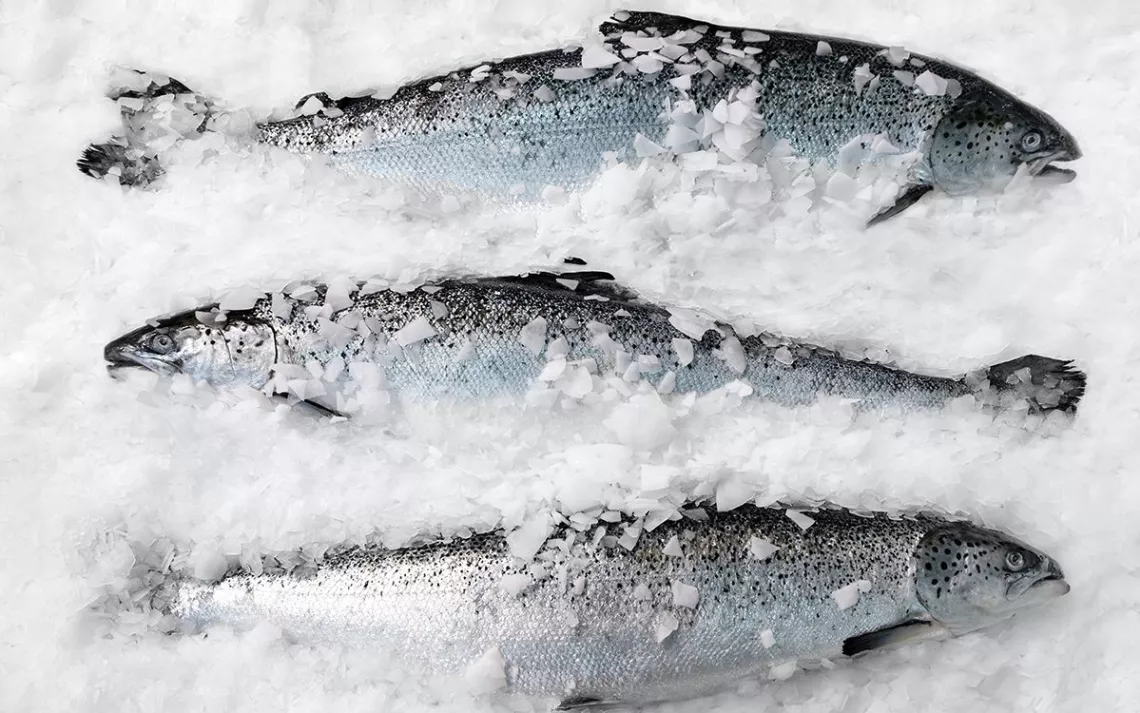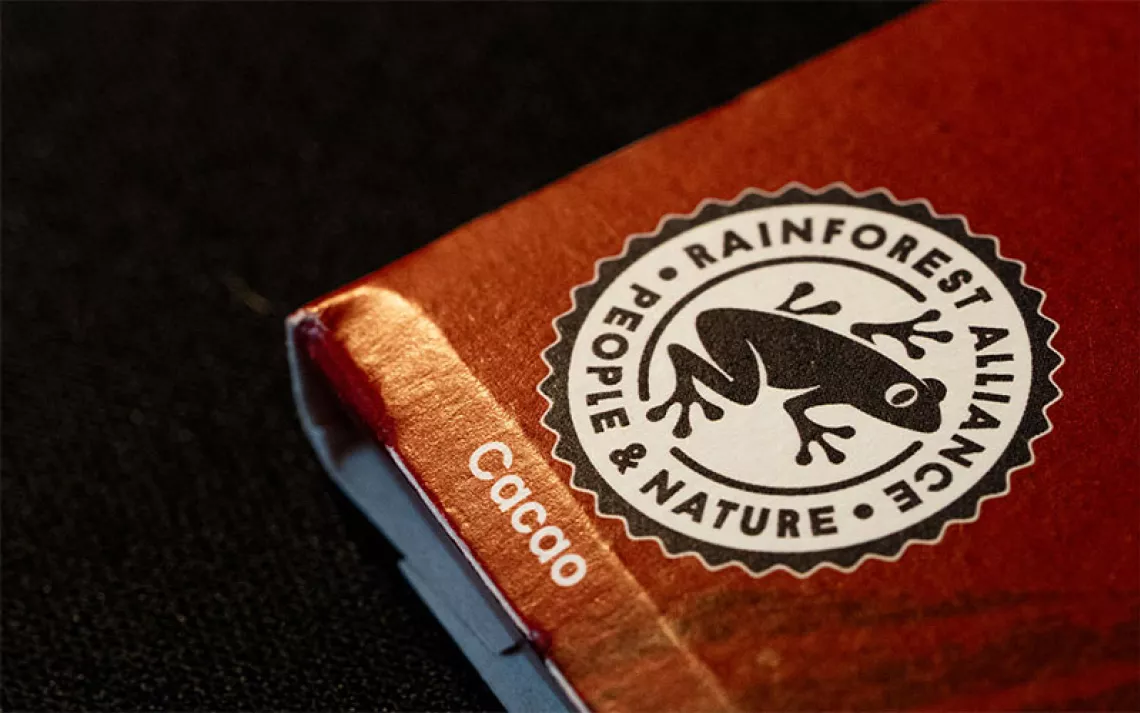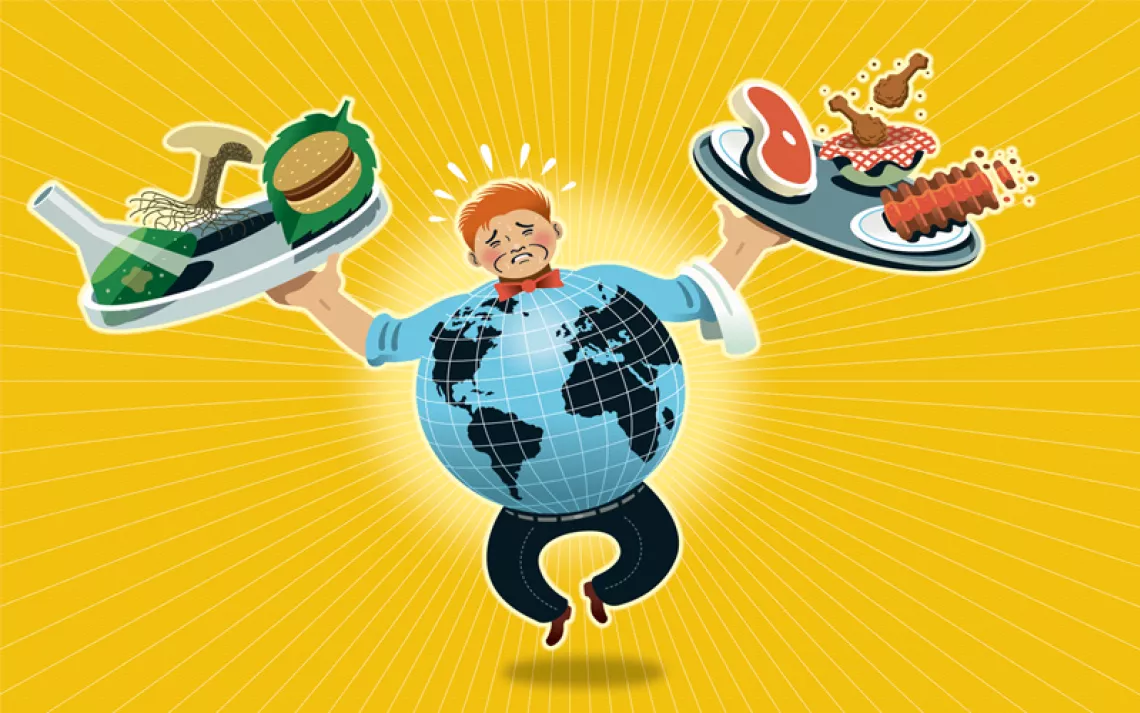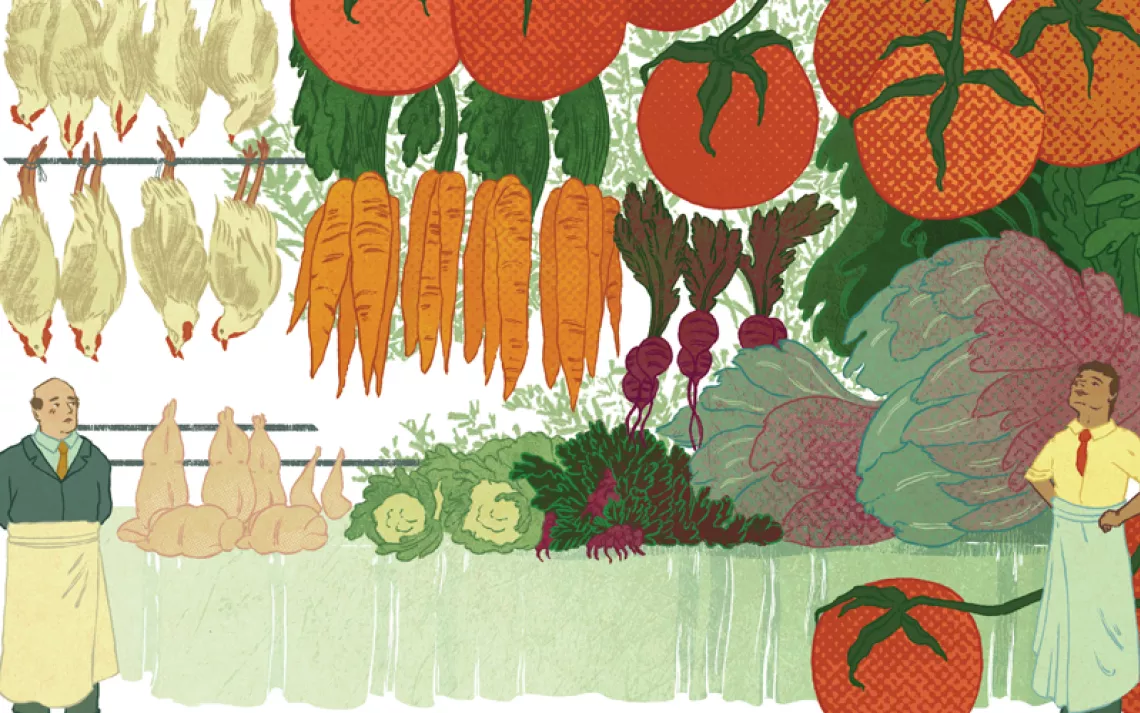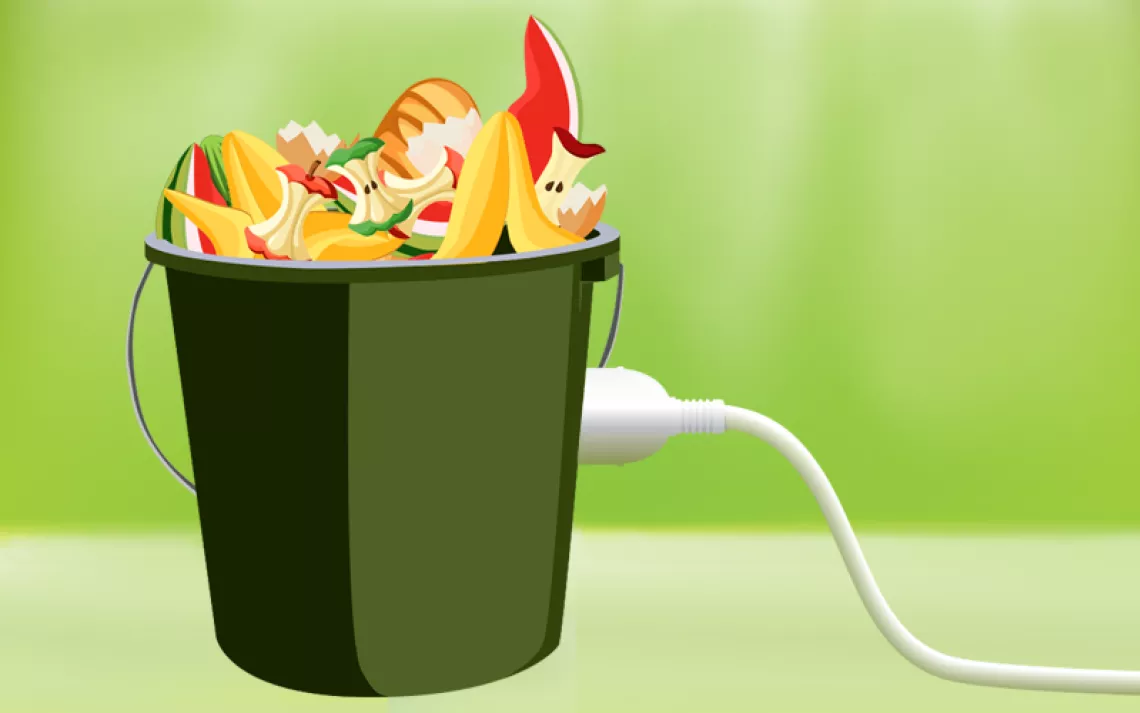We’re Running Out of Seafood, Yet We Waste Billions of Pounds of It
Here’s how commercial and social enterprises are making a dent in fishy food waste—and what you can do at home
A 2015 study published in Global Environmental Change estimates that every year, almost half the seafood supply in the United States is lost, amounting to nearly 500 million pounds of protein waste. Globally, we lose 110 billion pounds. Considering the US Department of Agriculture recommends that the average person consume at least 1.7 ounces of protein per day, this lost seafood is enough to feed more than 2.7 million people for an entire year. Relatedly, this particular form of food waste further contributes to overfishing, which has of course precipitated a steep decline in marine wildlife populations.
Getting fish from sea to table involves quite a few steps in a standard supply chain, and unfortunately, each tends to produce waste. When it comes to commercial fishing, especially those operations still using bottom trawls or gillnets, there’s substantial bycatch—i.e., other species inadvertently caught and fish that don’t meet fishers’ size standards. While bycatch by law have to be returned to sea, most creatures unfortunately do not survive due to injuries sustained during capture. Ten percent of fishery catch is discarded worldwide, and a 2014 report from Oceana estimates that 17 to 22 percent of fish caught in the US are discarded before reaching port. Beyond that, many fish spoil during transport—which is a bigger issue in developing countries where transportation tends to be slower and refrigeration less commonly available. Then, as those fish that make it are processed, offcuts (trashbound, non-filet-able fish parts) are generated. The stream of waste follows fish to seafood markets, and to our kitchens, once they surpass their fleeting prime.
The good news is, a number of organizations are working to improve fisheries’ sustainability, and they’ve made headway in the forms of electronic monitoring to ensure a given species is not overfished and innovative bycatch reduction devices, and through consumer education about which seafood species are more sustainable. However, seafood waste is much more than a fishery problem—in North America, the majority of waste actually occurs on the consumption and distribution end of the supply chain. (Globally, North America and Oceania trash the most seafood—almost 50 percent of total catch is wasted.) So while it’s important to spend our dollars on sustainably caught fish and call for government action to impose laws to minimize bycatch, it’s all a moot point if you end up throwing away half the fish you buy.
Part of the problem is that as consumers, we’re typically more drawn to those whole fresh fish kept on ice at grocery stores and seafood markets than we are to prepacked or frozen seafood. Yet a USDA study found that retailers displaying fresh seafood cases with fish on ice generate more seafood waste than those that only sell prepackaged fish. It’s a complex issue—as mentioned, plenty of offcuts are discarded during the commercial preparation of fish filets. The filet yield after whole fish are processed depends on the type of fish but runs as low as 30 to 35 percent. The rest of the fish—offcuts—are usually turned into low-value products like fertilizer or pet food, or else discarded completely.
Combating Seafood Loss
Nick Mendoza saw an opportunity in offcuts trashed during the fish-fileting process. In 2018, he launched One for Neptune, using such abundance to create fish jerky out of rockfish from the Pacific Northwest and from wild Alaska pollock—thereby turning a highly perishable product into one with a year-long shelf life. (Mendoza specifically chooses white fish as a canvas for his recipes, which he says makes it taste more like beef jerky than salmon would.) The idea behind Neptune Snacks was not only to reduce waste but also to create higher value for fishermen. But despite having produced 75,000 packets of fish jerky, One for Neptune currently works with only a single fishery for each species, and its demand barely makes a dent on the fishery’s offcuts supply. Mendoza’s been getting calls from other producers trying to offload their excess cuts, which speaks to just how much excess supply there is.
Jerkifying is hardly the only way to upcycle—in 2004, Louis and Lisa Strauss realized fish skin can be tanned into leather, creating a more sustainable alternative to cow leather. It’s why they started working with tilapia aquacultures to obtain leftover skin from processed fish to create accessories such as wallets and coin purses, and founded Col de Mar. The Strausses says tilapia is one of the most aquacultured fish, adding that its larger-scale pockets create beautiful patterns. And that may be just the beginning for fish skin’s potential—its high collagen content renders it promising as a skin graft to treat burn injuries (currently, Iceland-based Kerecis has the only FDA-approved fish skin graft).
In remote places like Alaska, it is too expensive to ship offcuts off to, say, pet food manufacturers, meaning those salmon skin and crab shells that remain after seafood is processed for human consumption are typically ground up and discarded back into the ocean, creating additional environmental harm. It’s why Tidal Vision started creating wallets out of salmon skin and eventually grew to become the country’s first chitosan producer. A derivative of chitin, chitsoan is a polymer with antimicrobial properties. It’s produced from crustacean shells and has a variety of uses, from winemaking to medical applications. Tidal Vision uses a closed-loop, zero-waste process to produce chitosan from leftover crab shells. Other companies are sourcing chitin to make bioplastics for fish packaging—its antimicrobial properties are said to extend the shelf life of fresh fish by 40 percent. It’s a solution that not only attacks the seafood loss problem from two fronts but also addresses the critical issue of plastic discards in the ocean.
Funneling offcuts is only one part of the problem, though. Liwei Liao is on a mission to put a dent in the huge amount of waste that fish markets generate when unsold fish deteriorates on ice. Liao runs a zero-waste seafood market and cafe called The Joint in Sherman Oaks, California. His secret? Dry-aging his fish well before it starts to deteriorate. Yes, just like beef, dry-aged fish can be kept for weeks, or even a couple of months. Even better, Liao reports, dry-aging improves taste. “When [customers] eat it at home, they think this is fresh fish,” he says.
The dry-aging process removes the blood and moisture from the fish, which is typically associated with “fishiness.” At the same time, it breaks down muscle tissue, thus tenderizing the texture. The dry-aged fish is also easier for an amateur cook to prepare, as it’s more forgiving of overcooking. Liao offers fish bones and heads to any customer who wants to make stock, and whatever’s not sold at the market is used at the cafe.
In New York State, Dock to Dish started the original community-supported fishery (CSF), connecting local fishermen directly to consumers. As in a typical CSA, members subscribe to receive a certain amount of seafood—an arrangement that tells fishermen just how much demand exists. Dock to Dish also operates on a “whole haul” basis, meaning all fish caught are distributed among all customers, thus circumventing the problem of bycatch.
While Dock to Dish CSF shuts down operations during the winter, cofounder Sean Barrett and his team use that time to travel around the country to help struggling fish communities set up similar programs. In recent years, Barrett has shifted to connecting fisheries to local restaurants rather than directly to consumers, which allows fishermen to sell whole fish rather than filets. “Restaurants have a 90 percent utilization rate,” says Barrett, “since they have the culinary skills to work with whole fish.”
How You Can Help Reduce Seafood Waste
While commercial and social enterprises are emerging to fight this issue, US consumers still discard 1.3 billion pounds of seafood annually. Incremental changes to our own habits in purchasing and preparing seafood can go a long way to reduce overall loss. Here are some tips to that end:
-
Choose seafood caught or farmed via environmentally sound methods.
Sustainable fishing tends to contribute less bycatch than trawls or gillnets. Already, consumer demand for sustainable alternatives has resulted in certain retailers implementing requirements around sustainability in the seafood they carry. If you’re not yet familiar with common options, know that the blue MSC label from Marine Stewardship Council certifies that seafood is wild, traceable, and sustainable.
Monterey Bay Aquarium Seafood Watch has a guide on which fish (and from which parts of the world) are most sustainable for consumption, and here at Sierra, we also published a guide to the most sustainable seafood to eat. Still, it may be difficult to determine where that cod sitting on ice at your local grocery store came from—so try to shop at markets that demonstrate a commitment to sustainability.
-
Don’t snub frozen seafood.
In some cases “fresh” fish was actually previously frozen and thawed for retail sale. Fish frozen shortly upon harvest can be fresher and better quality according to food safety standards, and as mentioned above, their longer shelf life reduces food waste. In fact, in many states it is legally required to super-freeze fish before serving it raw—meaning you’ve likely eaten super-frozen fish at sushi restaurants. The key is to make sure you’re buying frozen fish products from sources that have a low environmental impact.
If you already purchased fresh fish but won’t have the chance to eat it for a few days, freeze fish while it’s still fresh. Experts recommend rinsing fish in cold water, then putting the unwrapped fish in the freezer. Once it hardens, dip it in ice-cold water and place it back in the freezer. Repeat this “ice glazing” process a few times, then wrap fish in a freezer bag and freeze.
-
If possible, buy whole fish straight from the source.
Buying whole fish not only reduces waste but also commands a lower price per pound of protein. Since grocery store seafood cases are also a source of waste, it’s best to buy as close to the source, such as from your local, community-minded fishmonger. LocalCatch.org provides a nationwide resource to find local seafood purveyors (it includes seafood markets in landlocked areas that source directly from fishermen). You can also find CSF programs that will ship fish directly from the fishermen to consumers.
Many home cooks in the US these days are no longer accustomed to breaking down a whole fish, but chefs will tell you that whole fish result in better flavors than filets (plus, they’re more cost-effective and less susceptible to fish fraud and mislabeling). There are plenty of online resources with entry-level recipes and tips on how to handle whole fish.
-
If preparing a whole fish is too intimidating, branch out to other cuts.
When Boston-based Wulf’s Fish pivoted away from restaurants to direct-to-consumer supply, they decided to educate customers about utilizing cuts other than the standard filet. They now sell fish collars (which are wonderful grilled) and short cuts, and also turn smaller offcuts into poke cubes, soup packs, and fish burgers.
If you’re planning to use the fish for soups, stews, or curry, there is no need to purchase a filet—ask your local fishmonger for these smaller offcuts.
-
Find uses for your leftover seafood.
Whether you end up purchasing filets or whole fish, be sure to use every gram of protein instead of tossing the leftovers—something we should make a habit of for all the food we purchase. A little bit of creativity can go a long way—turn remaining meat into fish cakes or crab cakes or chowders, or toss seafood into pasta, fried rice, or salad. (Throw seafood in as the last step to avoid overcooking.) Bones from whole fish can be used to make fish stock. You can also eat leftovers as they are—microwaving seafood tends to dry it out, so it’s best to heat it up slowly, in an oven. If all else fails, find out how you can start composting in your area.
If current trends in overfishing and ocean pollution continue, scientists estimate that we’ll run out of seafood by 2050. Reducing global seafood loss will not only cut down on waste and reduce the amount of discards dumped back into the ocean, it’ll help combat overfishing and hopefully maintain a protein-rich supply of seafood to nourish a growing global population.
 The Magazine of The Sierra Club
The Magazine of The Sierra Club
